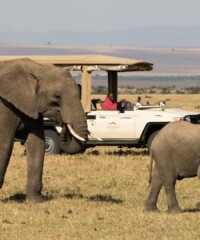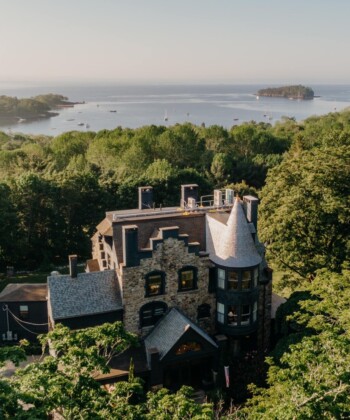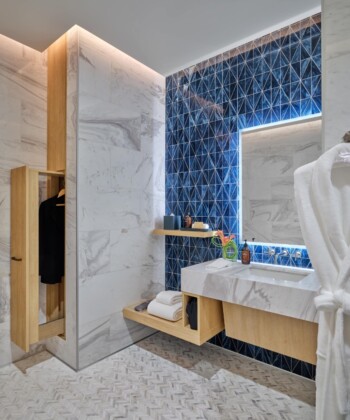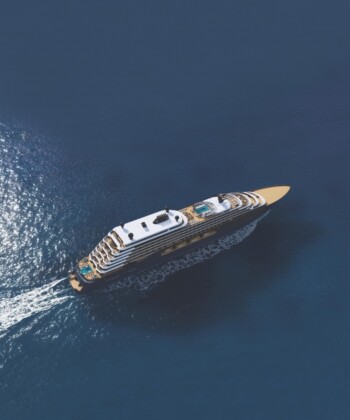Some people make a habit of going on safari regularly, in the same way that others trek annually to Aspen to ski, Paris to shop or Miami or Austin to eat at Uchi. For many, though, an African safari is once-in-a-lifetime. Whenever you raise the possibility with friends, you’ll often hear that it’s a “bucket list trip.”
So, if you’re going to take a bucket list trip, you might as well go to a bucket list kind of place, right?
That’s the aim of Mahali Mzuri, a simultaneously luxurious and rustic Kenyan safari camp owned by Sir Richard Branson situated within the 30,000-plus acres of Olare Motorogi Conservancy in the Maasai Mara ecosystem.
Located some 150 miles west of Nairobi and accessible via scheduled and charter planes out of Nairobi’s Wilson Airport or, even more conveniently, helicopter, Mahali Mzuri is intended to be intimate, familiar and familial. Twelve tents—all outfitted with more than the bare necessities, including Wi-Fi and a special Mahali Mzuri rubber ducky—can sleep a maximum of 24, and the staff, along with general manager Wilson Odhiambo, will certainly make you feel at home.
You will likely cross paths, eat a meal, watch the World Cup late at night at the bar, have a locally sourced cocktail or spot lions with your fellow guests. The benefit is the opportunity to share this bucket list experience not just with the nearest and dearest in your party, but also with all of the new friends you meet along the way.
Mahali Mzuri, which translates to “beautiful place” in Swahili, is the kind of magical environment where you inevitably make new friends. It’s inherent in the ethos of Branson’s camp, which emphasizes sustainability and conservation. Beyond working with Maasai communities to find employees and guides for the resort, Mahali Mzuri also supports the Maa Trust, a Kenyan organization that focuses on improving life in the area. For the last several years, a percentage of every guest’s stay has been donated to help build, fund and grow a nearby school for local children, the Enkenju Enkoirien Primary School, about 2.5 miles away from camp.
Of course, the main event at Mahali Mzuri is game viewing. Peak viewing happens during migration season, which lasts from the middle of June until the end of October. This is when 1 million wildebeest and hundreds of thousands of zebras, gazelles and other animals journey about 1,000 miles through Tanzania and Kenya and cross the Mara River. You can experience it on drives, of course, but also from the deck of your very own tent or sitting around a fire pit in one of the camp’s communal areas.
In less hectic times, you’ll still experience Kenyan nature at its most primal and awe-inspiring. On daily morning and afternoon drives with Mahali Mzuri guides in beautifully outfitted Toyota 4Runners, you’ll come across at least four of the Big Five game animals—namely lions, elephants, leopards and buffalo. (The fifth, the black rhinoceros, is critically endangered.) This is on top of giraffes, hyenas, hippos and any number of birds and other animals native to the area.
Encounters with wildlife don’t only come on these drives. Sometimes, animals will visit your tent to say hello or walk alongside you to dinner. (Don’t worry, there is always a hotel staff member to accompany you back to your tent.) Some nights you might wake before sunrise to the surprisingly loud gossip of very chatty baboons.
But at that point, you can just lay in bed and listen until you fall asleep with the hot water bottle left for you under the covers each evening. If you bring any tradition of Mahali Mzuri back with you, it might just end up being that nightly hot water bottle. A bracelet made with local Maasai beads might remind you of your trip, but that hot water bottle will remind you of the homey comforts of this “beautiful place.”







































